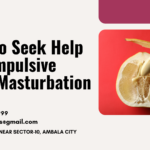Cuddling is a powerful form of affection that plays an essential role in building emotional closeness in relationships. Beyond the warmth and comfort it brings, cuddling strengthens bonds, enhances trust, and promotes a sense of security between partners. Whether it’s a soft hug, holding hands, or snuggling up close, cuddling is an intimate act that offers various benefits to couples.
Here’s everything you need to know about cuddling in relationships:
Table of Contents
1. What is Cuddling in Relationships?
Cuddling in relationships is the act of close physical contact between partners, often involving gentle touch, holding, or lying close together. It’s not necessarily a prelude to intimacy but is often a tender way to bond and show love. Cuddling can happen while lying in bed, watching a movie, or simply relaxing together.
Common forms of cuddling in relationships include:
- Spooning: One partner wraps themselves around the other from behind, offering a comforting embrace.
- Head on Chest: One partner rests their head on the other’s chest, allowing them to feel each other’s heartbeat and feel close.
- Hand Holding: Holding hands while sitting or walking together gives a subtle but powerful sense of connection.
- Leg Entangling: Couples may intertwine their legs while sitting or lying close, providing a casual yet intimate connection.
2. Why is Cuddling Important in Relationships?
Cuddling offers more than just physical closeness; it provides emotional support and comfort, enhancing the relationship in multiple ways:
- Builds Trust and Safety: Cuddling creates a feeling of safety and trust between partners. The act of being close to someone physically helps both partners feel more secure in the relationship.
- Encourages Open Communication: Physical closeness during cuddling promotes an environment where both partners feel comfortable sharing their thoughts and emotions.
- Reduces Stress: Cuddling triggers the release of oxytocin, known as the “love hormone,” which helps reduce cortisol levels (stress hormones) and enhances relaxation.
- Increases Relationship Satisfaction: Research has shown that couples who cuddle regularly are often more satisfied and happy in their relationships, as it fosters a sense of connection and understanding.
- Enhances Intimacy and Affection: Cuddling keeps the sense of physical intimacy alive, which can be especially beneficial in long-term relationships.
3. The Health Benefits of Cuddling
The positive impact of cuddling extends to physical health, contributing to overall well-being:
- Improves Mood and Reduces Anxiety: The oxytocin released during cuddling has been shown to improve mood and reduce feelings of anxiety. This hormone also boosts feelings of contentment and happiness.
- Promotes Better Sleep: Cuddling relaxes the body and mind, helping partners feel calm and peaceful before sleep, resulting in better rest.
- Relieves Pain: Cuddling releases endorphins, which are natural pain relievers, making it helpful for easing minor aches and improving physical comfort.
- Boosts Immunity: The reduction in stress and the increase in happiness from cuddling can positively impact the immune system, helping partners stay healthier together.
4. Cuddling and Emotional Closeness in Relationships
Cuddling promotes emotional closeness by creating moments of intimacy and vulnerability. Physical touch helps couples feel valued and loved, fostering emotional bonds. Couples who regularly cuddle often report a stronger connection and feel more supported by their partners. In long-term relationships, cuddling can help rekindle affection, serving as a reminder of the warmth and love they share.
5. Ways to Make Cuddling a Natural Part of Your Relationship
Incorporating cuddling into a relationship doesn’t require grand gestures; small, simple acts can help make cuddling a regular, meaningful habit:
- Start with Small Gestures: Hold hands while sitting together, put an arm around your partner’s shoulder, or offer a quick hug throughout the day.
- Set a Routine: Whether it’s cuddling before bed or while watching a movie, having a routine helps keep physical closeness part of your daily lives.
- Focus on Being Present: During cuddling, avoid distractions like phones or screens, and focus on your partner, creating a sense of intentional togetherness.
- Show Appreciation Through Touch: Use cuddling as a way to express gratitude, love, and care, making each embrace feel genuine and meaningful.
- Try Different Cuddling Positions: Changing positions, like spooning or hand-holding, adds variety and keeps the act fresh and engaging.
6. Cuddling as a Tool for Conflict Resolution
Cuddling can be a powerful way to reconnect after disagreements. It helps break down emotional barriers by encouraging vulnerability and mutual comfort. After resolving a conflict, cuddling can help partners feel reassured and restore harmony. Physical touch during difficult times communicates support and understanding, helping to ease residual tension.
Have any Question, Contact Now
Cuddling is more than just a physical act; it’s a form of emotional expression that strengthens relationships. By making cuddling a part of your relationship, you can enhance emotional closeness, reduce stress, and build a lasting bond with your partner. Embrace the power of cuddling to keep your relationship warm, connected, and full of affection. Whether you’re just starting out or have been together for years, never underestimate the impact of a loving embrace.







